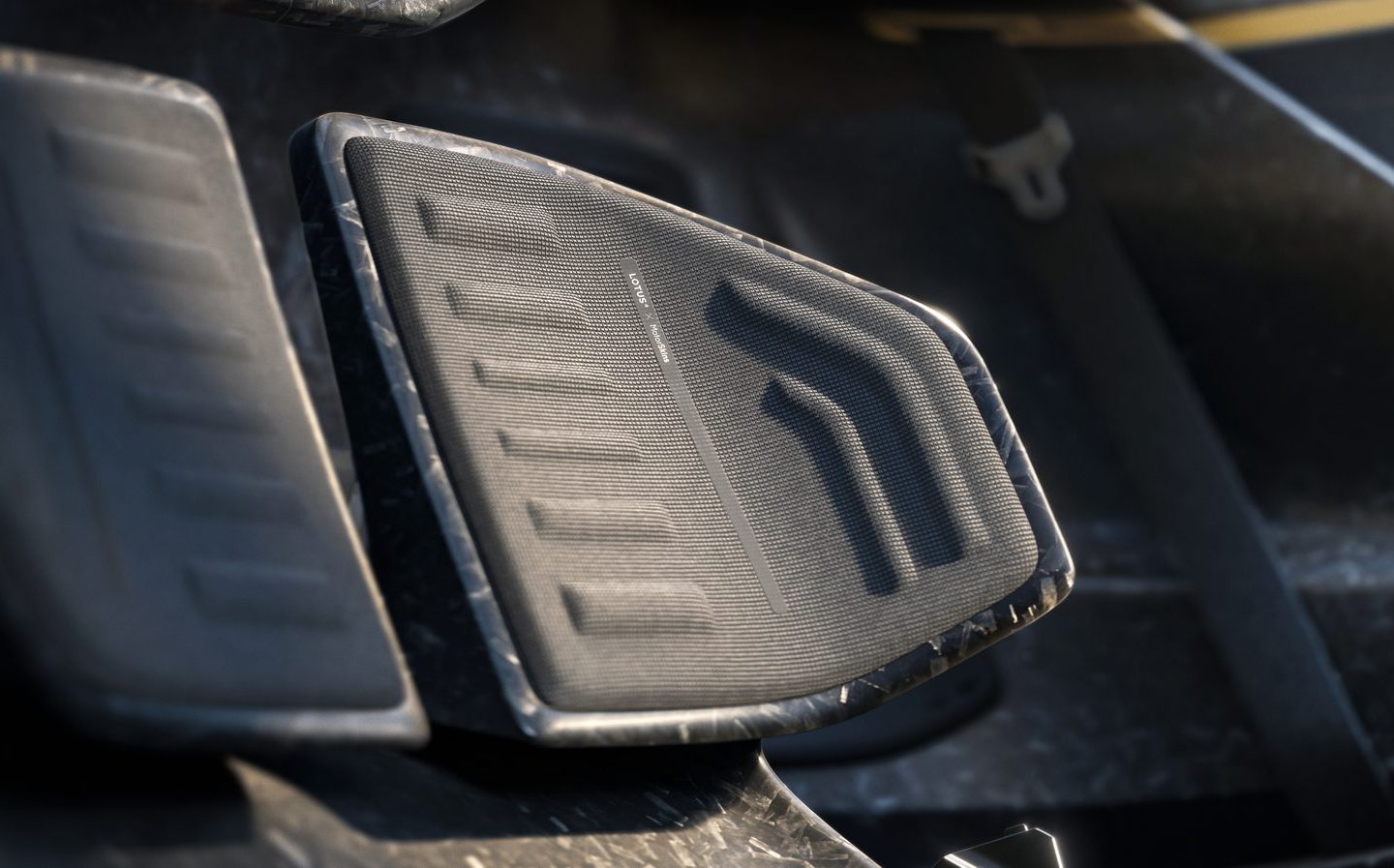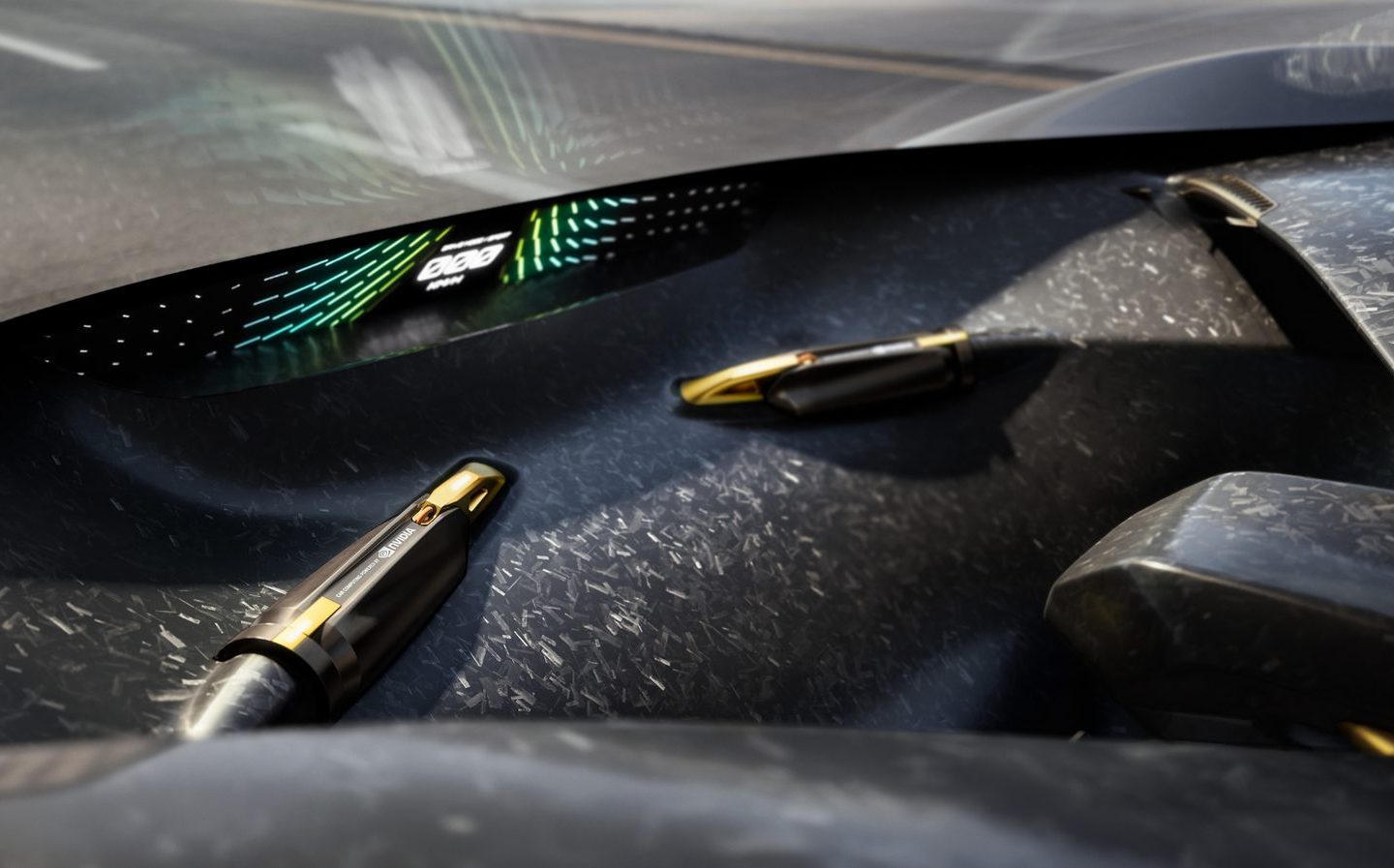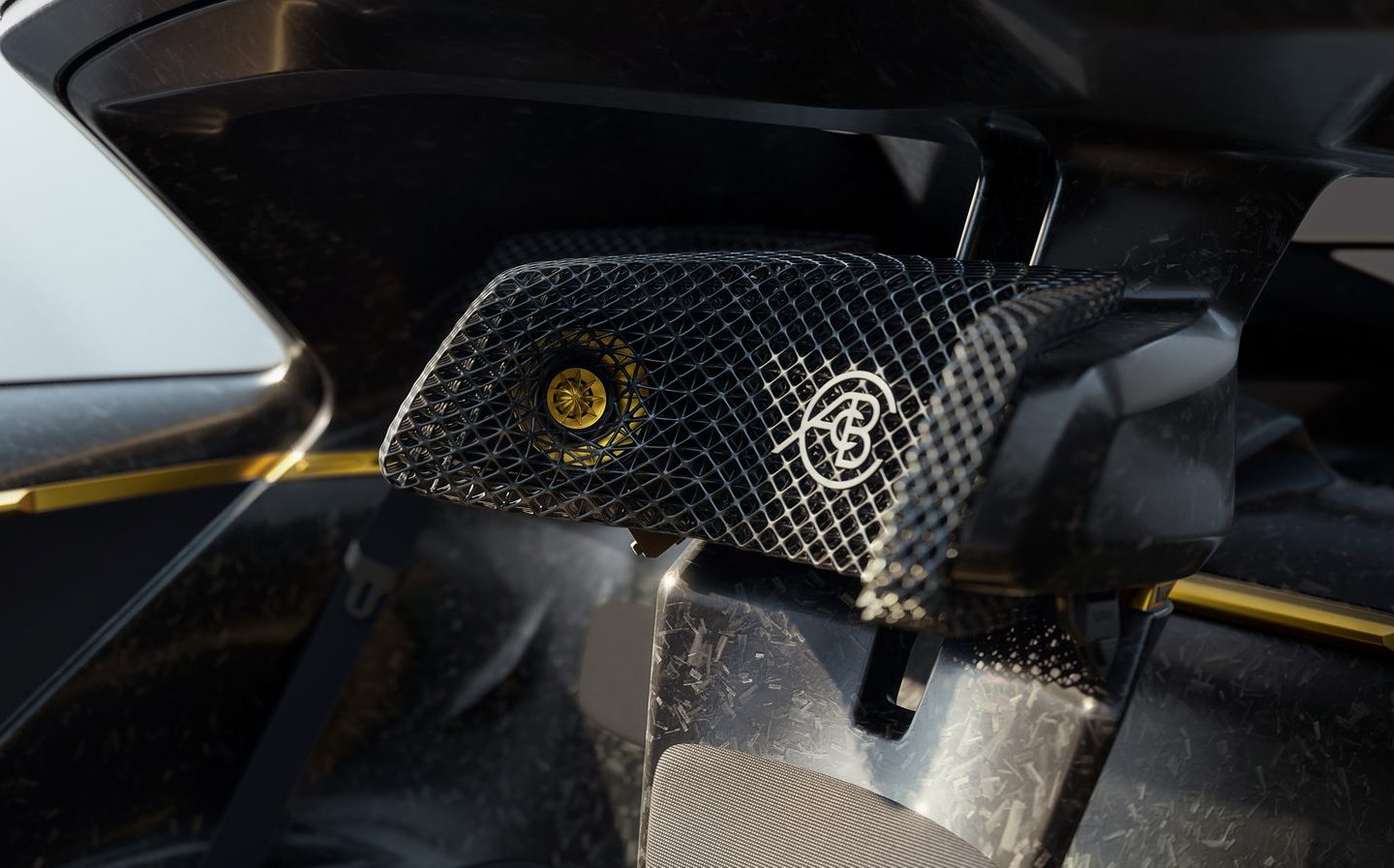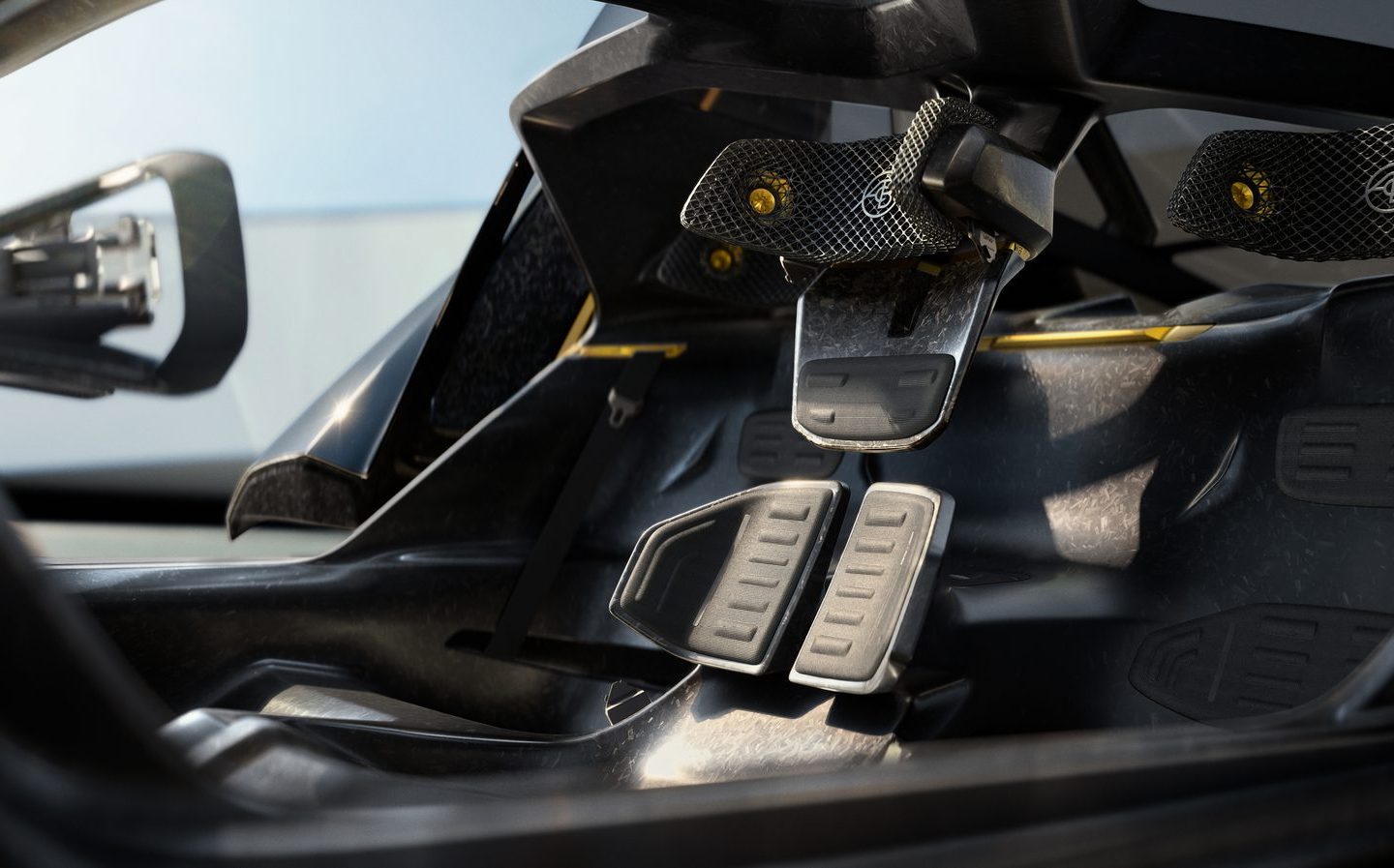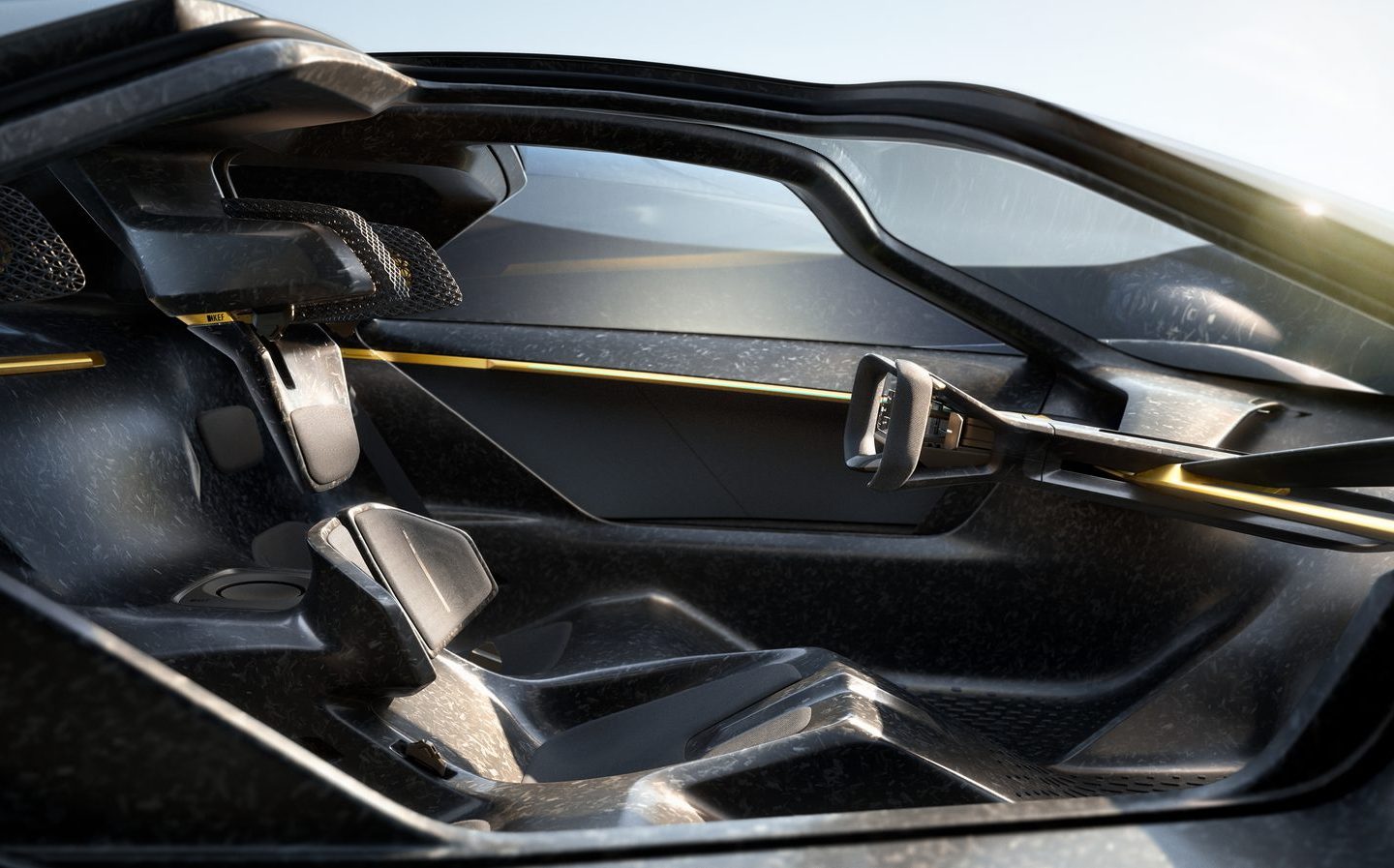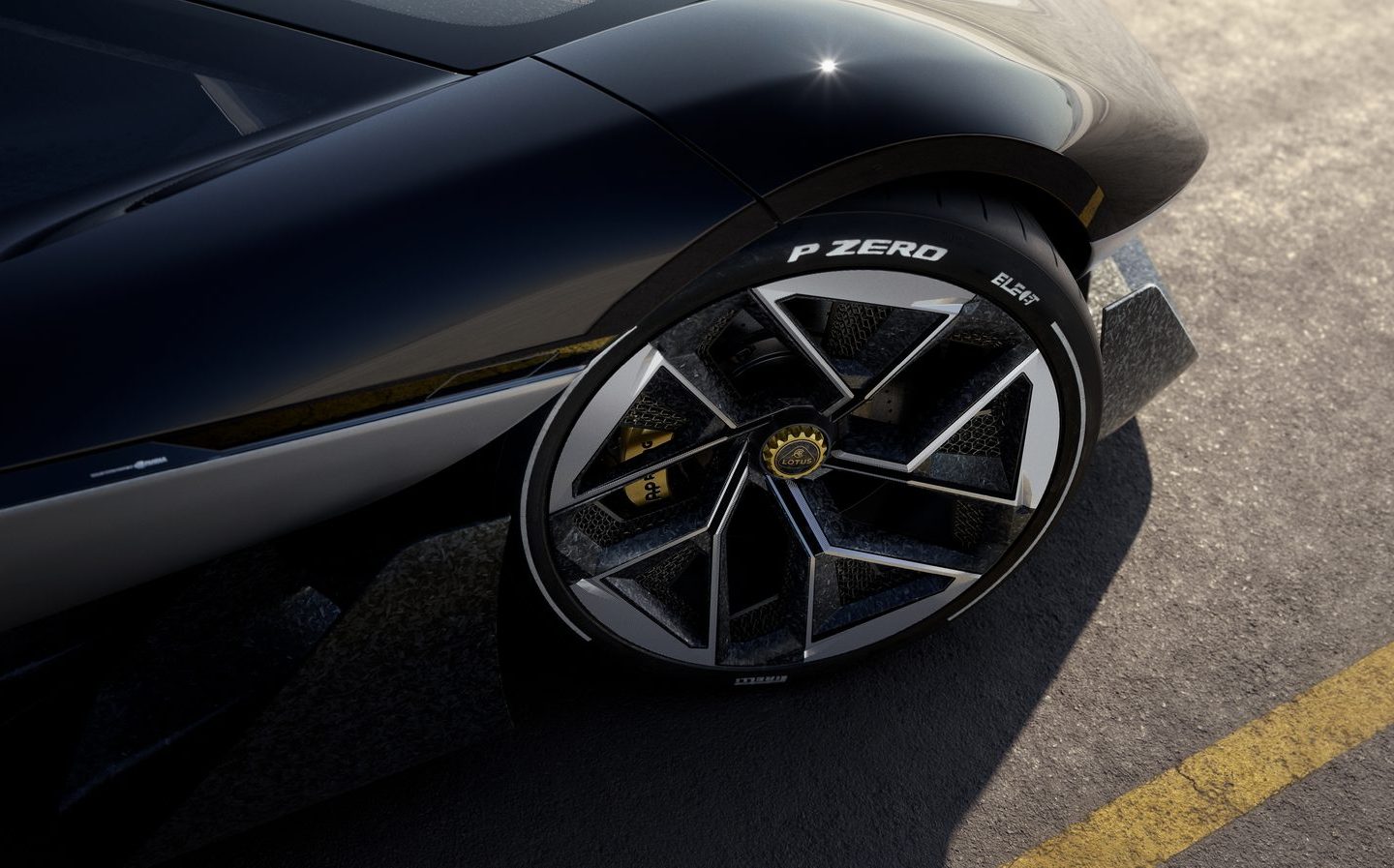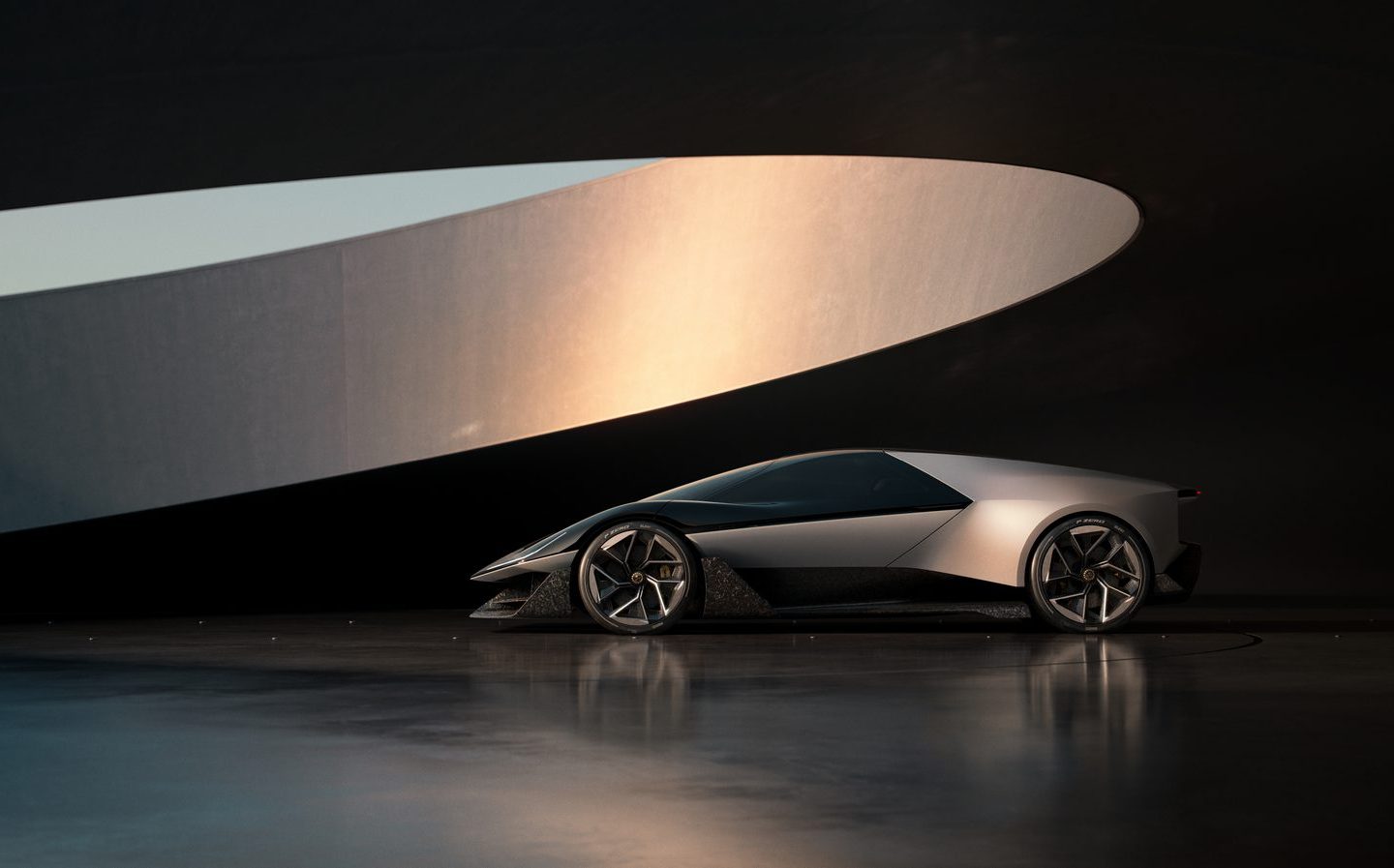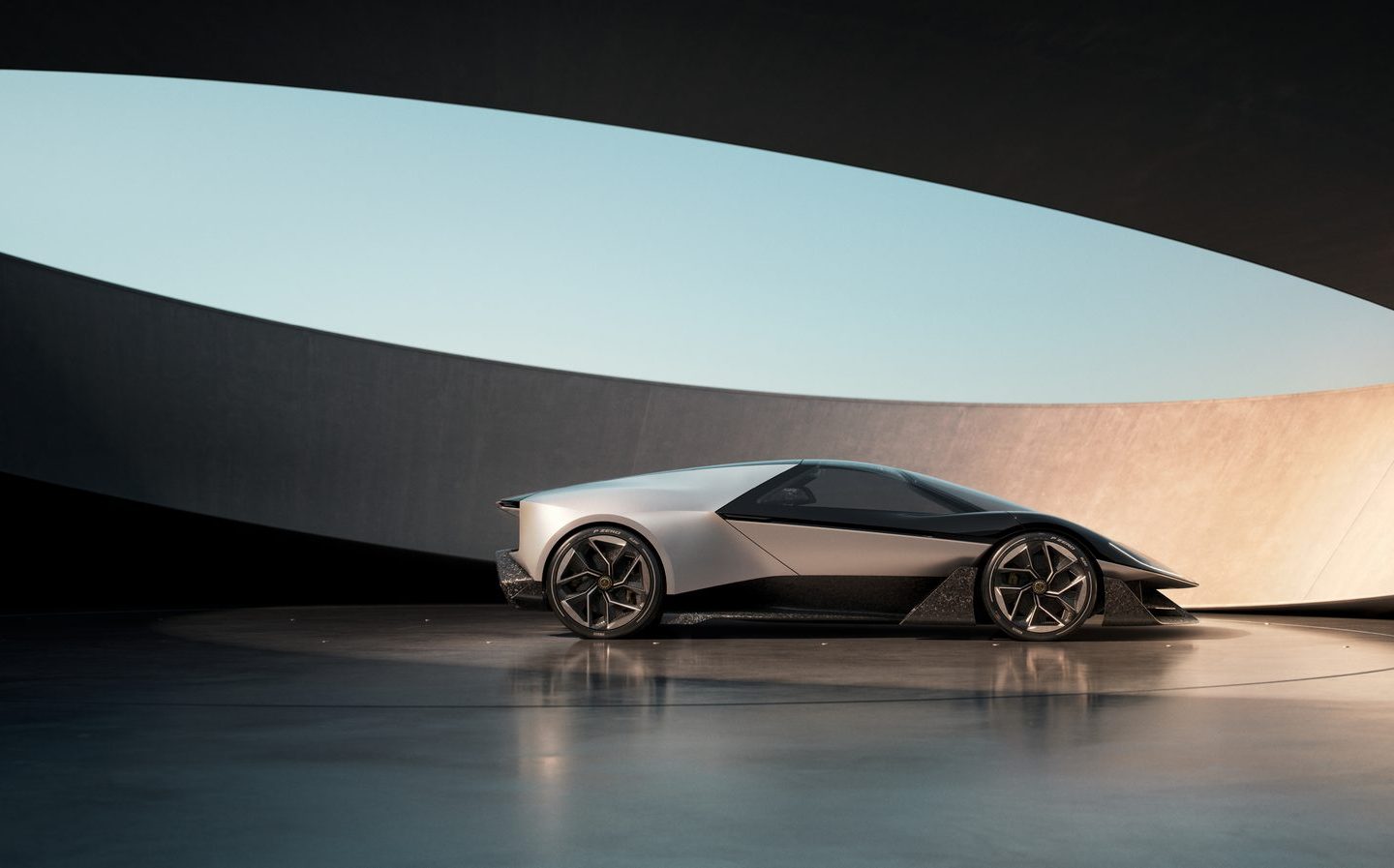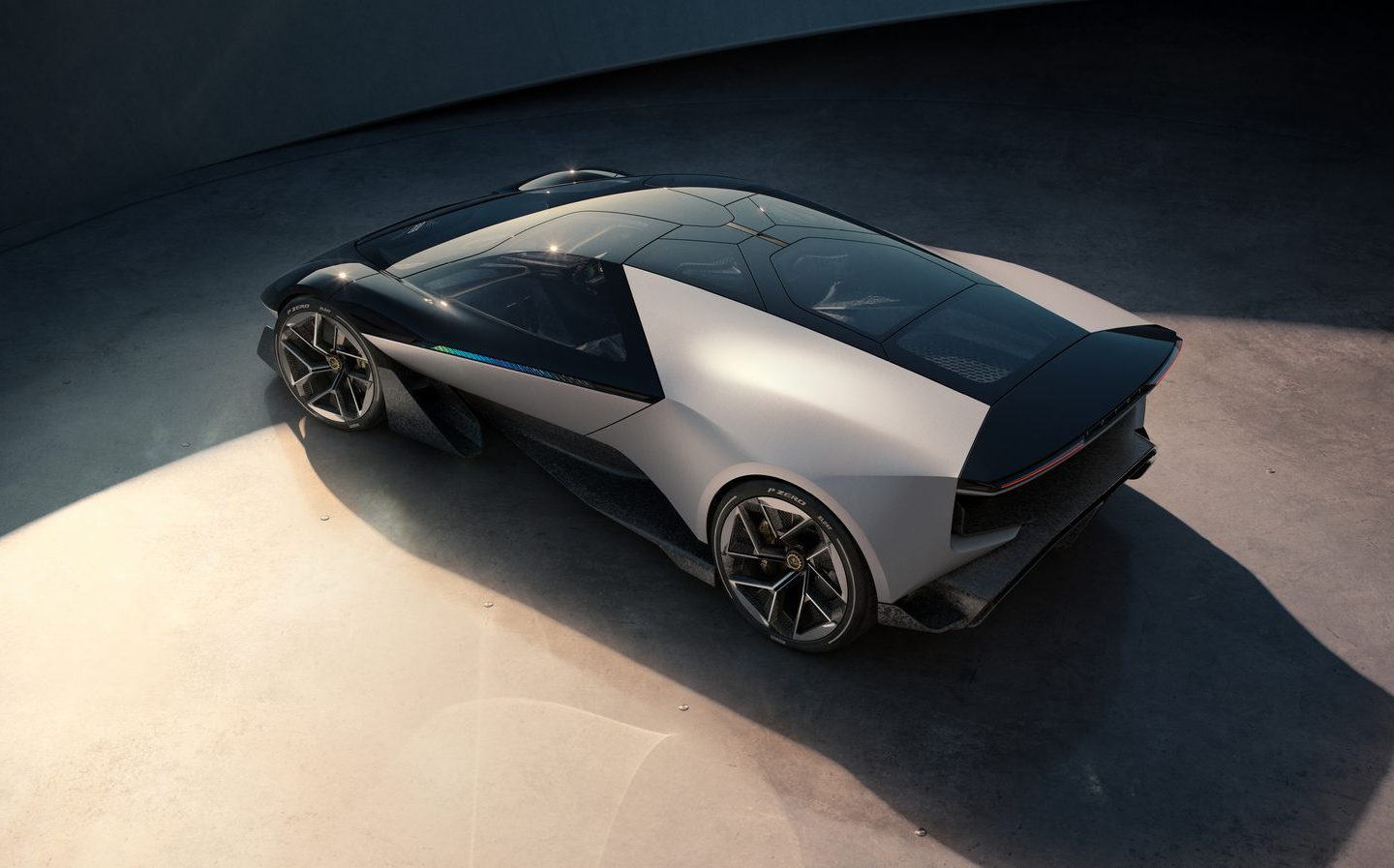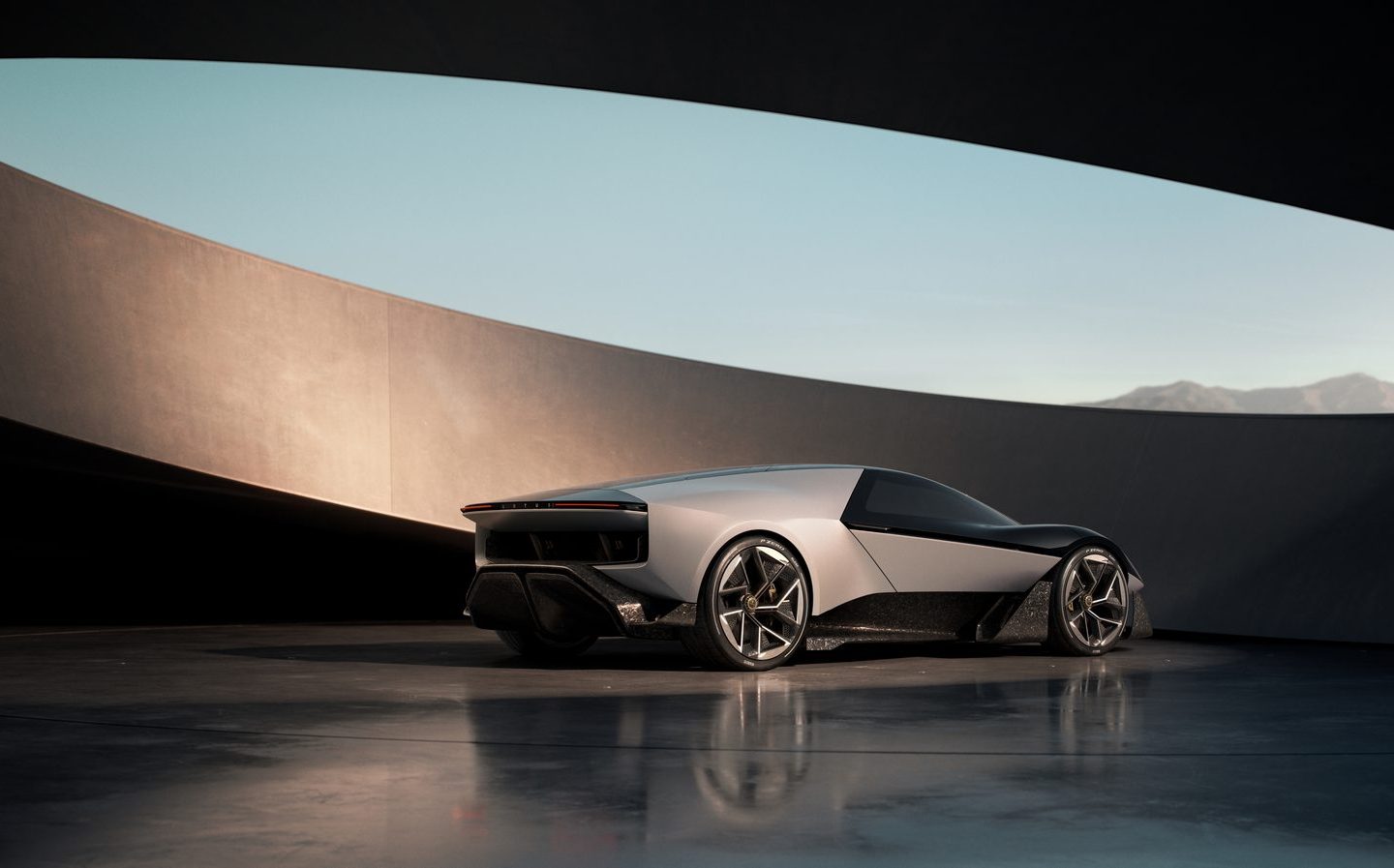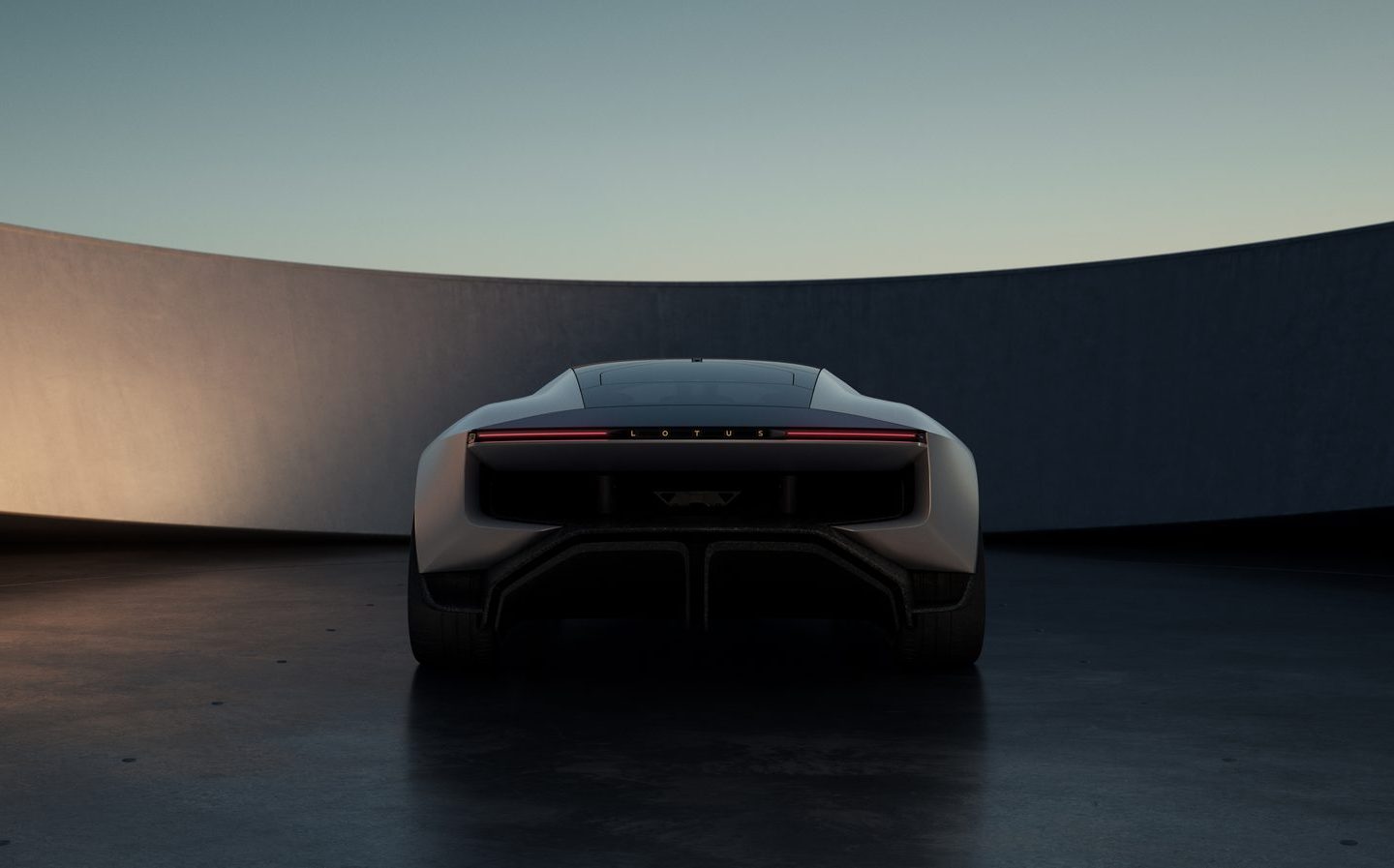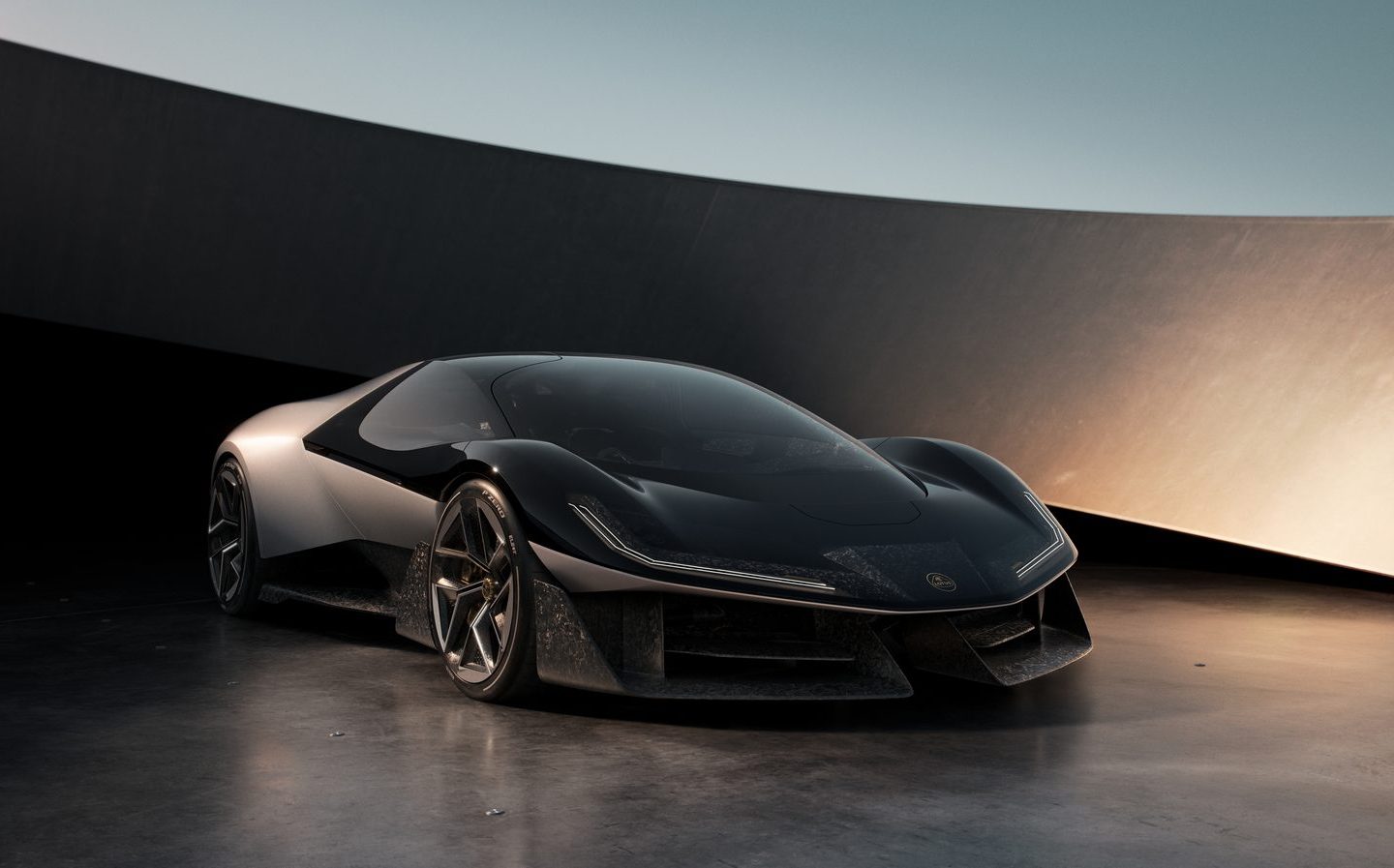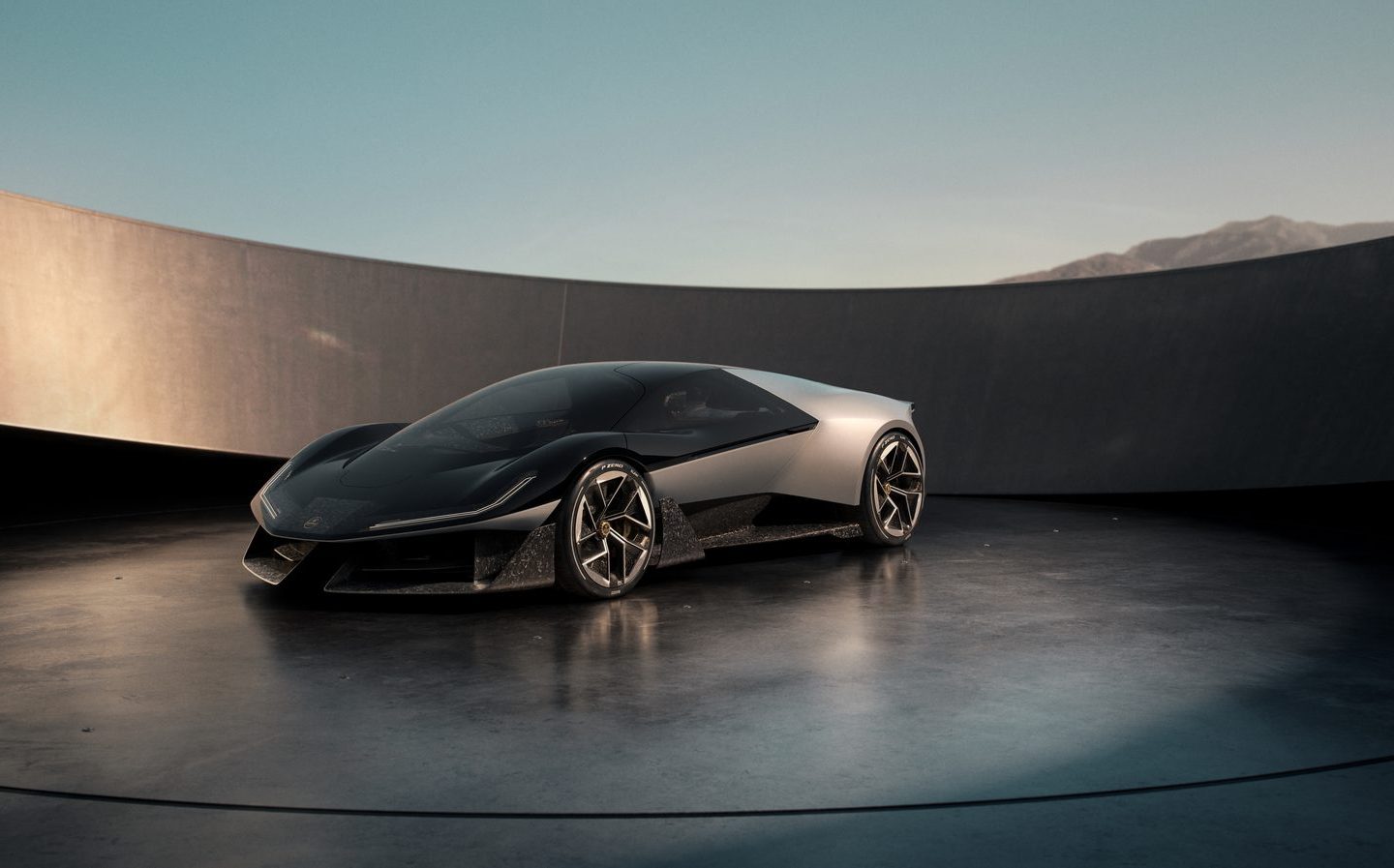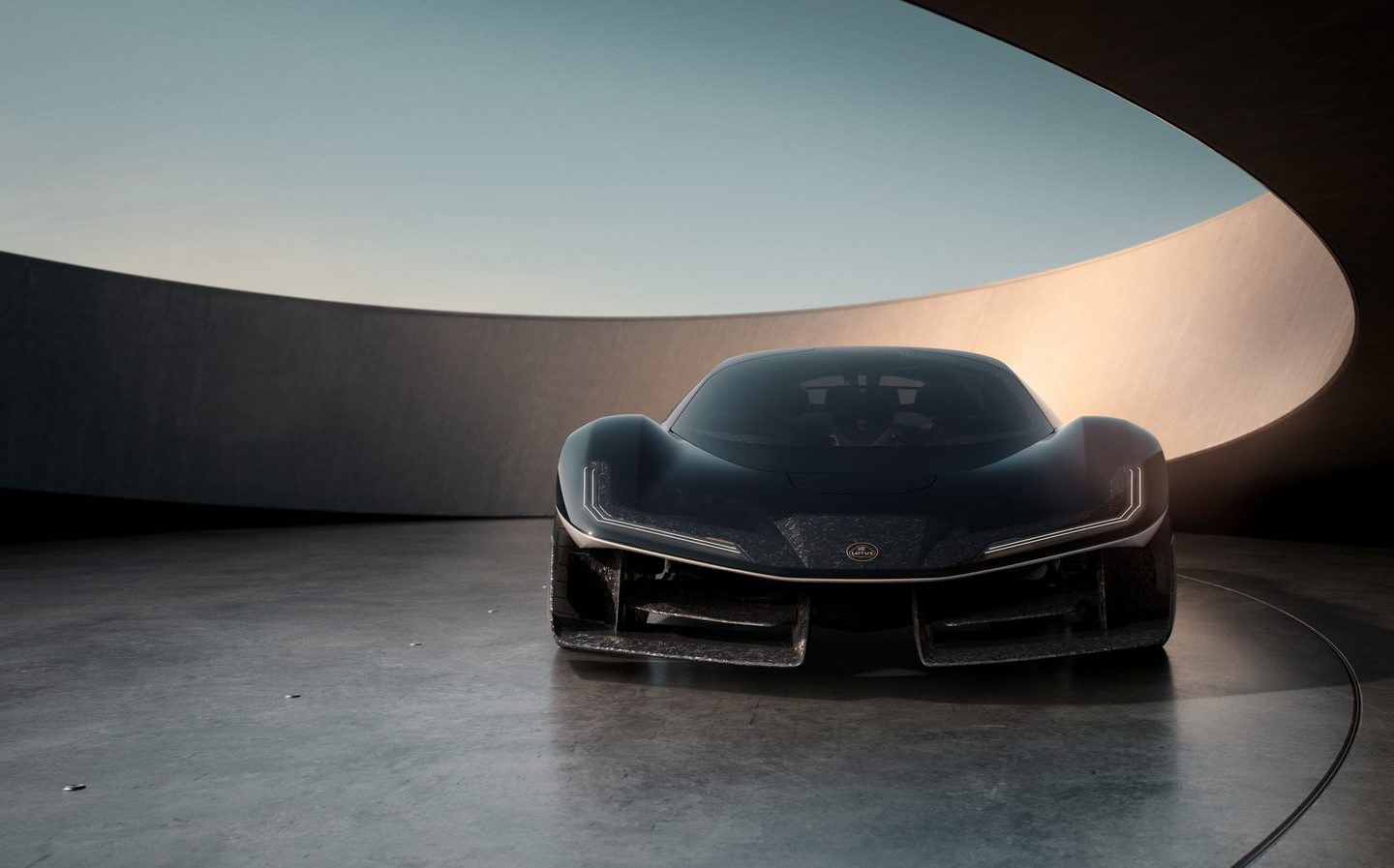Return of the wedge: Lotus Theory 1 concept car is 1,000bhp EV with 250-mile range
Is this an electric Lotus Esprit of the future?
Lotus has unveiled the new Theory 1 electric sports car concept, which offers almost 1,000bhp from its motor and battery assembly.
The three-seat coupé is billed as the embodiment of “the future of intelligent performance vehicles” and is intended to showcase innovative technology and aerodynamics, as well as the British carmaker’s future design direction.
Lotus says the Theory 1 provides the “ultimate driver experience,” thanks to its “human-centric” design, digital experience and analogue feel. And the company says the technology will all be integrated into future Lotus products.
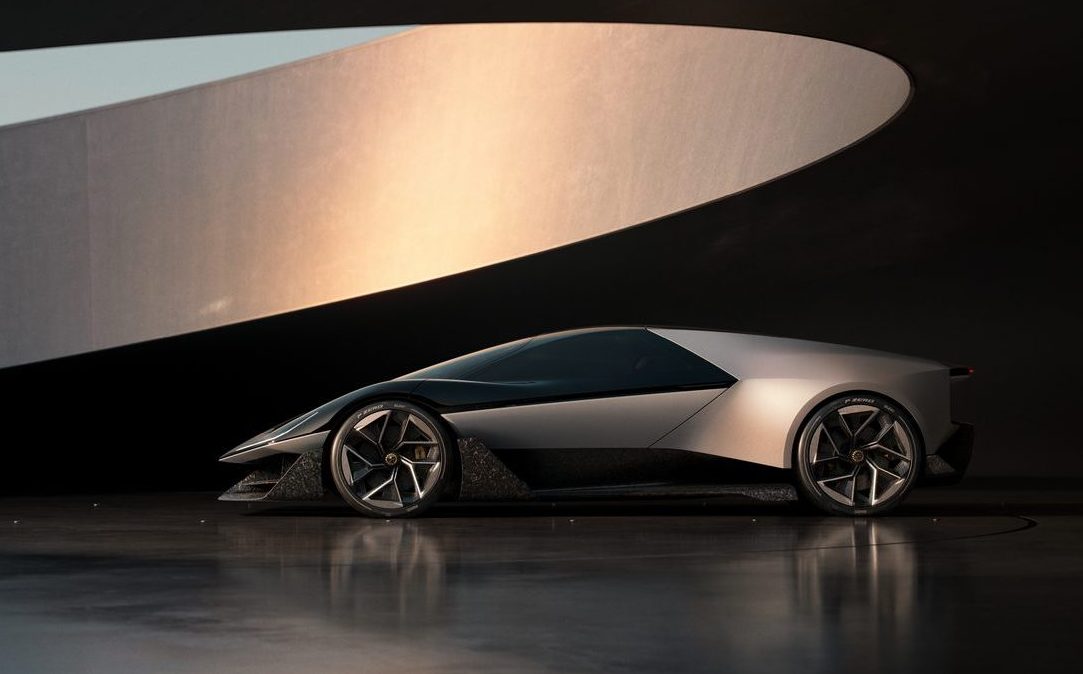
Aerodynamically optimised design
Externally, the Theory 1 has a futuristic and aerodynamically optimised design that allows the company to use just 10 exterior surface materials in the car’s manufacturing, including glass fibre, recycled carbon fibre and titanium, as well as transparent polycarbonate and recycled aluminium.
All that comes together in a body shell that uses both active and passive aerodynamic features for maximum performance. The car’s nose, for example, comes with air deflectors and creates an air curtain surrounding the car for greater efficiency, while a contoured underfloor creates downforce and directs air into the cooling system. The side pods, meanwhile, are designed to isolate the wake from the airflow that’s attached to the body, creating greater efficiency.
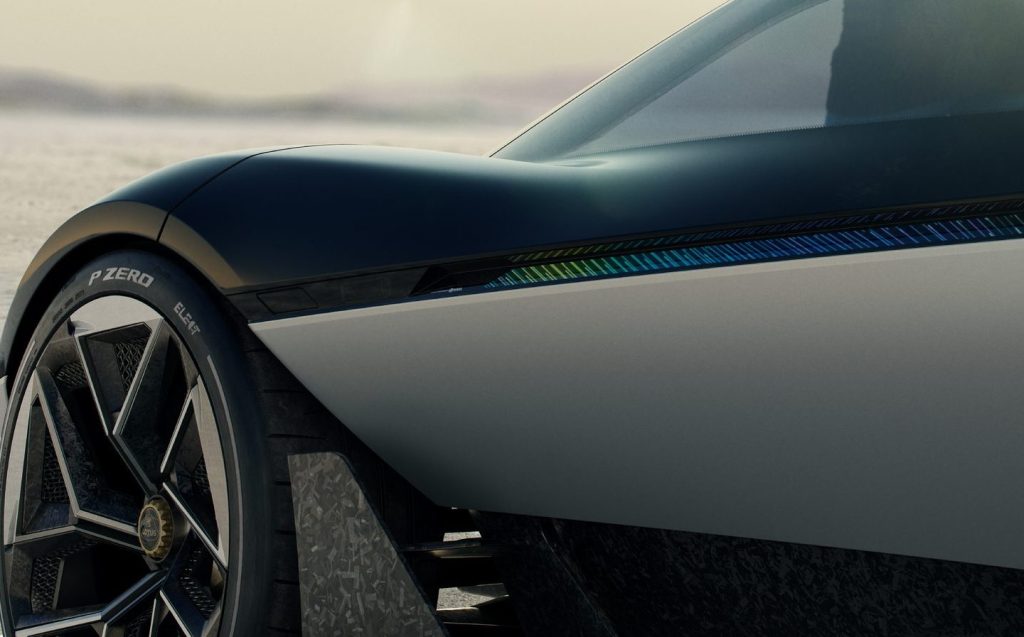
Similarly, Lotus has used motorsport engineering know-how to make the battery and electric motor assembly a “stressed” part of the car’s structure, meaning there’s no subframe and therefore less weight and complexity.
Motorsport engineering
The rear wing is also mounted to that assembly, which means the wing acts directly on the suspension mounts and therefore the tyres, reducing losses and lift at the car’s nose. And even the rear suspension itself is designed to be compact and low-slung, lowering the car’s centre of gravity.
Lotus has still tried to orientate the Theory 1 around the driver, with a central driving position and two passenger seats behind. The driving seat itself is fixed and integrated into the car’s structure, with adjustment of the pedals and steering wheel to suit each driver.
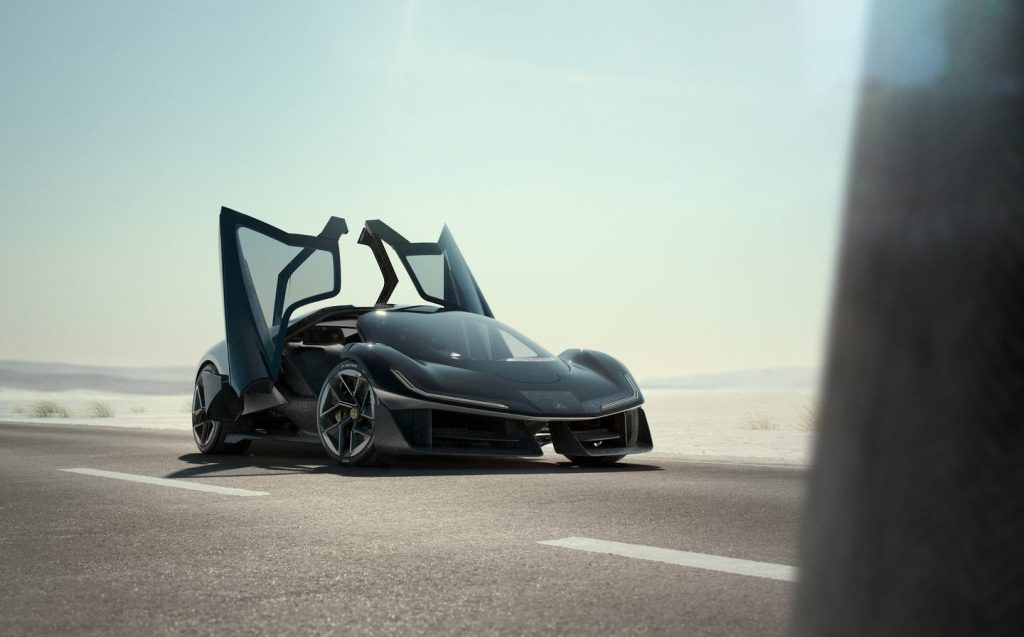
The doors feature a proprietary “sports car door system” that enables “step-in” access thanks to its reverse-opening, wrap-over design. That not only looks cool, but also means the doors don’t take up too much space when opened, allowing access in tight parking spaces.
The driver ‘wears’ the car
Lotus has also created a new “Lotuswear” interior that includes an adaptive robotic textile material, which apparently enables the car to “communicate with the driver and passengers.” It does so through inflatable pods on the seat and steering wheel, which react in real time to adjust seat support and provide subtle prompts for safety tech or steering assistance.
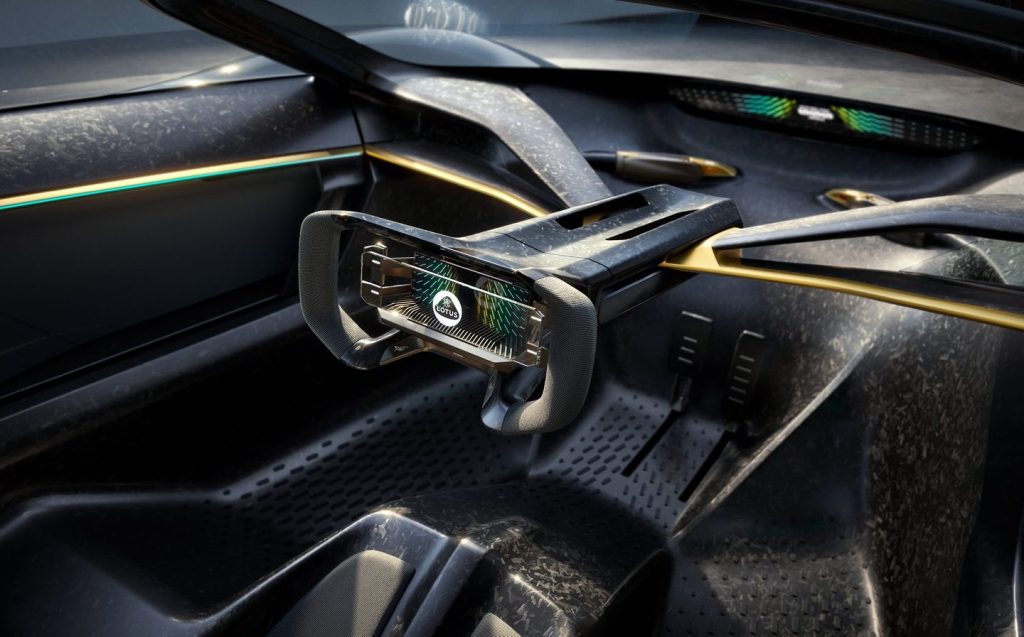
Each of the car’s head restraints also has a binaural audio system, creating “bespoke soundscapes” for each occupant, with so-called “speed sounds” and noise cancelling abilities, each of which can be adjusted by the seat occupant.
There are more conventional screens, too, with Oled displays providing information to driver and passengers, including a screen on the steering wheel itself. There’s a head-up display on the windscreen, too, and a range of systems to give information about safety and driver assistance features.
Advanced brakes and steering systems
Naturally, Lotus has also put emphasis on the dynamic experience, fitting the car with steer-by-wire technology that’s intended to enable adjustment of steering ratios and feel, as well as precision and control.
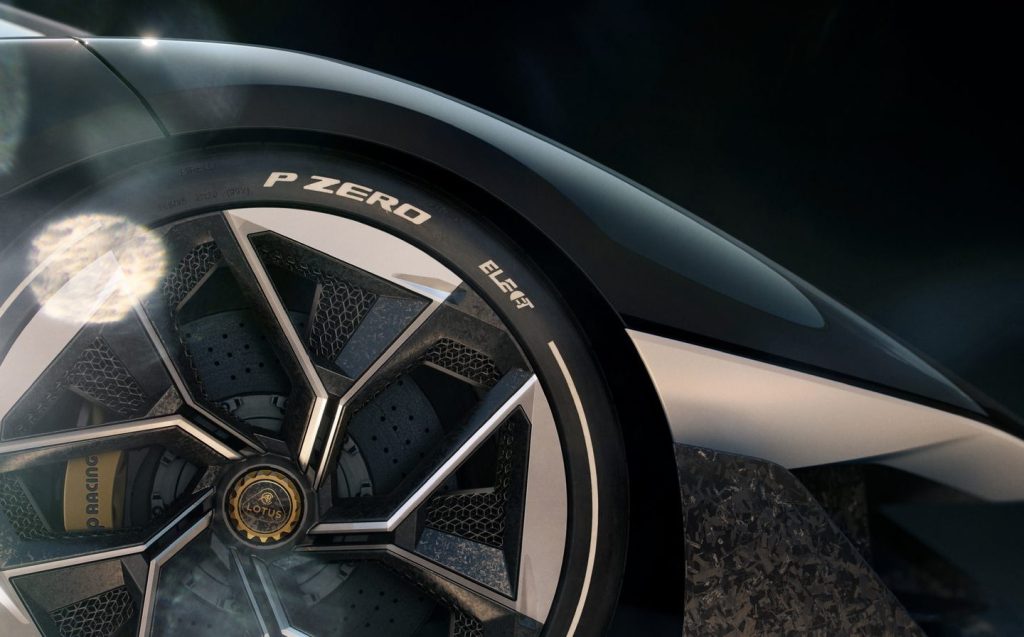
An advanced performance brake system has been fitted, and Lotus has equipped the car with Pirelli P Zero Elect tyres engineered for low rolling resistance and enhanced grip and traction, particularly with regard to the immense torque (twisting force) of the electric motors.
There’s certainly plenty of that in the electric powertrain, which provides 1,000 metric horsepower (986bhp). That gives the car the ability to get from 0-62mph in less than 2.5 seconds and to accelerate on to a top speed of 200mph. The battery pack isn’t huge, having a capacity of 70kWh, but that means it isn’t overly heavy. When driven sedately Lotus says the concept car can cover 250 miles on a single charge.
“With Theory 1, we’ve built on everything Lotus has achieved so far in its 76-year history, to push the boundaries for what it means to drive a performance vehicle,” said Ben Payne, vice-president of design at the Lotus Group.
“We want to demonstrate that you don’t need to compromise — with both digital and analogue capabilities working harmoniously in the future car. In doing this, we are able to bring drivers the best possible immersive driving experience with raw emotion, functionality and connectivity, at the core.”
Related articles
- If you found this article about the new Lotus Theory 1 concept interesting, you may like to check out the new Lotus Emeya, a four-door electric GT
- Fancy a Lotus SUV instead? We have all the details on the electric Lotus Eletre
- And don’t miss our list of the five greatest Lotus sports cars of all time
Latest articles
- Lewis Hamilton wants to design a modern day Ferrari F40 with manual gearbox
- Dacia Bigster 2025 review: The ‘anti-premium’ family SUV that punches above its weight
- Your car’s worn tyres could be being burnt illegally in India, investigation reveals
- Open-top 214mph Aston Martin Vanquish Volante is world’s fastest blow-dry
- F1 2025 calendar and race reports: The new Formula One season as it happens
- Alfa Romeo Junior Ibrida 2025 review: Hybrid power adds an extra string to crossover’s bow
- Top 10 longest-range electric cars: all with over 400 miles per charge (officially)
- Renault 5 Turbo 3E ‘mini supercar’ confirmed with rear in-wheel motors producing 533bhp … and insane levels of torque
- British firm Longbow reveals ‘featherweight’ electric sports cars with 275-mile range



